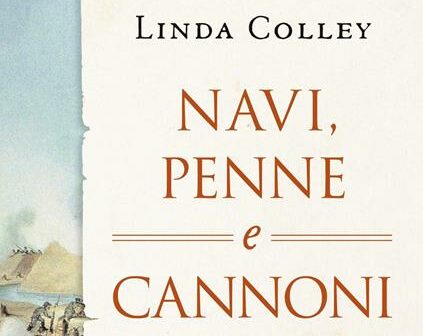The real eighteenth century

“Ships, pens and cannons” by Linda Colley read by Tullio Fazzolari
Each century lasted a hundred years and this seemed a certainty. This has not been the case since a great English historian, Eric Hobsbawm, defined the twentieth century as the short century, starting it with the First World War and ending in 1991 with the collapse of the Soviet Union. On the contrary, the nineteenth century becomes the long century because it begins with the French revolution and ends in 1914. Consequently, the eighteenth century is also short, ending in 1789.
The new calculation method has an irreproachable logic because it is based on events to give the century a characteristic of homogeneity. But it is totally discretionary to the point that even Hobsbawm's assessments can be called into question. This is demonstrated by Linda Colley's “Ships, pens and cannons” (Rizzoli, 468 pages, 26 euros). The author's goal is absolutely not to argue with other historians. But in fact it re-evaluates the eighteenth century which ends up becoming not only a longer century but also one of the most important for modern history. It is the era of conflicts that determine new arrangements in Europe and redesign colonial empires. It is also the era of revolutions and the first real war of independence with which the United States gets rid of British domination. And so far it may seem that the history of that period was written only with "ships and cannons" in an endless succession of war events. Instead, the eighteenth century is above all the century of the Enlightenment and what distinguishes it, as Linda Colley explains, is the birth of the first modern constitutions. The "pens" are ultimately the most powerful weapons that will leave an indelible mark for the future and almost everywhere in the world.
It is almost obvious to remember the constitutional charter of the American founding fathers. Or the declarations of principle following the French Revolution. But we should not forget the Nakaz of Catherine II of Russia of 1767 nor the attempt of the separatists of Corsica to give themselves their own organization in 1775. Between one war and the next, interest in the constitution develops almost everywhere. Even the Haitian rebels who delude themselves that they have become an empire try to give themselves one. Legislators appear in Sierra Leone and Tunisia where Khayr al-Din introduces the first modern Islamic constitution. France itself has never stopped in the search for a better order, so much so that even during the hundred days Napoleon asked Benjamin Constant, his historical opponent, to draw up the "Acte Additionel" to give a more liberal turn to his empire.
If we take into account the almost universal push towards the constitutions, the eighteenth century did not end with the storming of the Bastille. With a little exaggeration, it can be extended through much of the nineteenth century when more modern systems are introduced in Japan and even on the tiny island of Pitcairn. But reading Colley's book, one realizes that the progress of history counts and that there is little point in setting the stakes to mark a beginning and an end. After all, it was agreed that the short century had ended with the collapse of the Soviet Union, but looking at the consequences, with the Russian aggression against Ukraine, one doubts that the twentieth century is not over yet.
This is a machine translation from Italian language of a post published on Start Magazine at the URL https://www.startmag.it/mondo/navi-penne-e-cannoni/ on Sat, 20 Aug 2022 05:51:36 +0000.
